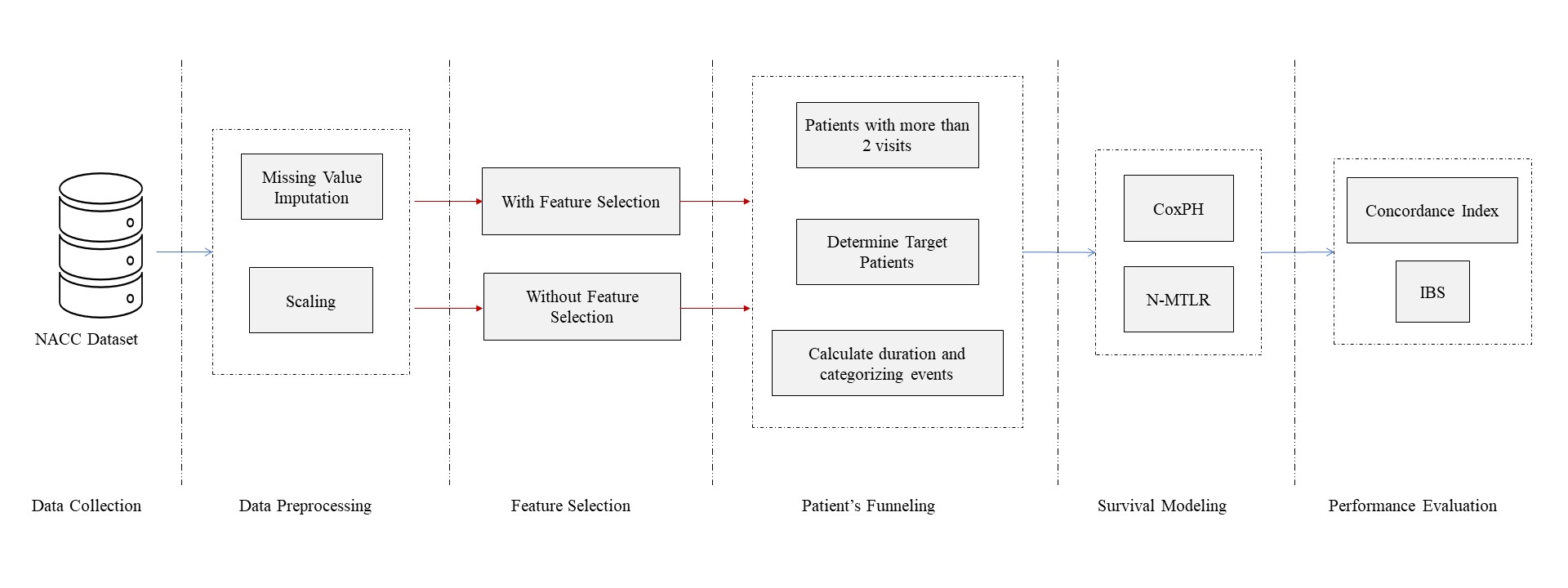
Survival Analysis for Alzheimer’s Disease Progression
Alzheimer’s disease (AD) is an irreversible, progressive disorder that causes health problems with thinking, behavior, and memory. In the United States, there are more than 5 million cases. The patients with the same AD may show different symptoms, progress at different rates to switch stages, and respond differently to therapy provided by health professionals. This study aims to model interactions between a patient’s inherent temporal and medical patterns to predict the probability of the AD next stage progression during a time-period. The probability of reaching the next AD stage is unique to a patient, which can help the medical practitioner to analyze the patient’s condition and provide personalized treatment ahead of time.
To obtain this, we simulate the progression of patient profiles using non-linear survival methods – Non-linear Cox Proportional Hazard Model (Cox-PH) and Neural Multi-task Logistic Regression (N-MTLR). Besides, we evaluate the Concordance Index (C-Index) and Integrated Brier Score (IBS) to describe the evolution to the next stage of AD. For personalized forecasting of disease, we develop deep neural network models using the dataset provided by the NACC (National Alzheimer’s Coordinating Center), which includes more than 36,000 patients with their multiple-visits details between 2005 and 2017.
The below diagram outlines the steps performed for the Survival Analysis:

The experiment results show that our predictive models can be utilized by medical practitioners to predict patients’ AD shift with 0.78 C-Index and 0.10 IBS. Our study also demonstrates that the selection of critical features can improve the effectiveness of probabilities at each time interval. This model can be extended to predict the time duration for disease shifts for other diseases such as Breast Cancer, Huntington’s disease, and Scleroderma, just to mention a few.
The ability of our model to leverage short-term data to obtain long-term probabilistic trajectories for predicting the shift of AD stage over time would be critical in creating a significant impact on the medical research community. The model will be useful for many tasks in precision medicine and clinical trial patient disease inference. The medical researcher and practitioner can use the model to simulate different scenarios and can give a better estimate to the patients in terms of check-ups, monetary, etc. and provide the required medication to reduce the calculated risk.
